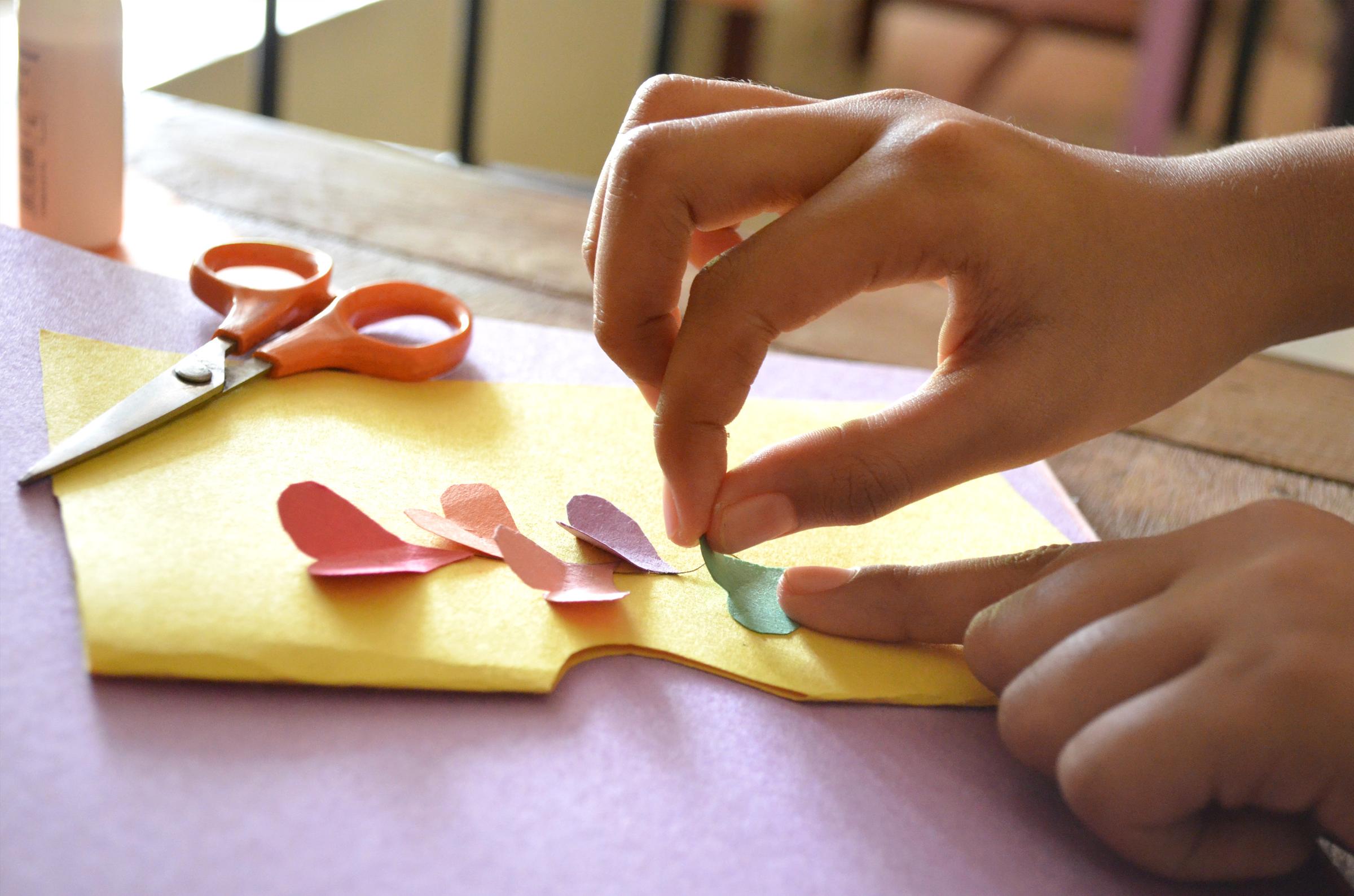
Positive Parenting Articles
How gratitude can help parents and carers support their children to learn at home
By Dr Kerry Howells
Dr Kerry Howells is a global gratitude expert. As a thought-leader, author, award-winning educator and experienced researcher Kerry has spent over 25 years researching, teaching and practising gratitude. Working worldwide with school leaders and teachers she has embedded gratitude into all levels of education. Recently, Kerry has also worked with coaches and elite athletes to use gratitude to improve performance.
Contact details
Parents around the world are not only struggling with the enormous changes and challenges of the COVID-19 pandemic, but are also being asked to step in to help with facilitating learning at home. For many this is adding further to an already stressful situation. Asking parents and carers to be up to the task of guiding their child’s learning is based on huge assumptions: that parents have the time, resources and emotional fortitude to do what the school is asking of them; that they have the confidence to do so; and that they themselves have had a positive experience of schools and learning.
Parents in this situation might think that practising more gratitude is counterintuitive or in fact a bizarre recommendation when there are so many hardships and complexities they have to deal with. However, what we have learned about the power of gratitude to enhance learning – and also more broadly to improve health and wellbeing – shows that is highly relevant to meeting the challenges parents and carers are currently facing.
Gratitude puts relationships at the heart of learning
When we are grateful we are open to what we receive and motivated to give back without expecting anything in return. Gratitude has been shown to be crucial to both building and maintaining relationships. In the home situation it could generate a greater sense of interconnectedness between parents and children, but also between parents and their children’s teachers.
As parents are being asked to have much more of a role in the educative process, there is a great opportunity at present to recognise the valuable part that parents (and carers) can play in a child’s education. We can restore schooling to be the three-way relationship that it always should be: between parent, teacher and student. However, this can only occur effectively if teachers and parents strengthen their relationships and make this the foundation of learning from home.
Instead of putting all the attention on technology and teaching materials to support distance learning, teachers and school leaders need to first focus on building their relationship with the parents. Here gratitude plays a major role in conveying to the parents how much they are valued for their efforts, and in listening to their concerns. The same goes for parents’ interactions with teachers.
Gratitude as a way of learning
When students are thankful while they are thinking, they are able to learn better. Students who apply gratitude to their learning report feeling a greater sense of connectedness with their subject matter, teachers and peers. They also state that gratitude helps them be more engaged and attentive.
So how could parents implement this in the learning from home situation?
Children can be encouraged to think about what they are grateful for within the content of what they are learning. For example, if they are learning about plants, there could be discussions between the parent and child about what they can be grateful for in everything that plants give us. Older children could be encouraged to keep a gratitude journal where they record what they are grateful for in ways that work for them – through video, photo, song, poetry for example.
Wherever parents can create opportunities for the child to learn through action, they are more likely to be engaged with gratitude. This can be even more successful – especially for older children – if gratitude is embedded subtly in the activity, rather than being taught to be grateful (which doesn’t work).
Now that there is more time spent at home and in the immediate neighbourhood, parents and children could explore together what they could do to express gratitude to neighbours, older people, another family living nearby, a single person. Depending on their age, activities could include:
- Writing a gratitude note of some kind to an emergency services or frontline worker
- Baking something for elderly neighbours (or anyone)
- Leaving a bunch of flowers outside a neighbour’s door
- Composing a grateful saying that could be offered before meals
- Creating a gratitude collage that could be added to every day
Gratitude can also assist in conversations around the situation in which the parent and child now find themselves. Children could talk about what they miss most about not being at school and encouraged to think about ways in which they perhaps took it for granted in the past. This would be a great way to introduce the power of gratitude as part of the learning process. A useful exercise for the child could be to write letters of gratitude to their teacher, principal or friends.
Many parents might be daunted by the demand to become masters of technologies that are being used to transfer learning online (even if they are lucky or wealthy enough to own the necessary hardware). One way to address any anxiety about this or other aspects of the learning from home context would be to bring greater awareness of what we can be grateful for in terms of any available technology. Another way would be to find ways of learning without using computers (bringing back the book, the pen and paper or whatever you have in the house), and have discussions about what has been gained and lost from technological innovation, as well as what we can be grateful for in both.
An hour of presence is worth eight hours of working through content
These activities are going to be most effective, if parents are consciously practising gratitude towards their children. Children are likely to become more grateful as a result of what parents are doing and how they are ‘being’ with them, rather than trying to directly teach them to be grateful. Parents can use this opportunity to grow their openness to what they receive from their child and this situation, and their ability to give back through their conscious expression of gratitude.
One of the most important roles that parents can play in this situation of learning from home is to spend some devoted time (short as it may be) to being as present as they can be with their child. Gratitude can facilitate this presence through the parent focusing on what they are grateful for in their child and looking for ways they can express this when they are with them.
An important aspect of relationship building is for parents to use this time to more fully develop their interest in the child’s interests. When parents are genuinely grateful for what they are being shown by their child, and for the enthusiasm and skills an older child can bring to this, there’s a greater sense of connection – an important foundation for creating a positive learning environment.
Parents could adopt an approach which I call A State of Preparedness, which focuses on the time before they start the lesson with their child, where they fill themselves with an awareness of things they can be grateful for. They could be thinking about this while having a shower or preparing breakfast. Just as a teacher’s inner attitude of gratitude has a powerful impact on creating a supportive learning environment in the classroom, a parent’s inner attitude sets the tone of the home environment.
Other ways of creating a supportive learning environment are through greeting the child in the morning with an inner attitude of gratitude or smiling warmly at them. To really approach the role parents have in parenting, gratitude is often, if not always, found when one is being patient, when one is truly listening actively, when one is ‘at one emotionally’ with the child and when one is embracing imagination and play. Such gratitude is expressed through kindness, trust, forgiveness and love.
Self-gratitude
It is very important for parents to be nurturing themselves and being grateful for what they are able to do even in the midst of the huge challenges they are facing. When parents are able to practise gratitude in any of the areas mentioned above, this is likely to have a positive impact on their own health and wellbeing as well as their child’s learning.
Remember that this is not about trying to achieve the impossible task of being grateful all the time, it’s about changing our inner attitude towards ourselves, this situation and others. It’s helpful to think of gratitude as a practice where we focus our attention in a purposeful way on one or two areas that are just a little out of our comfort zone. Understanding the power and potential of gratitude is a first step to starting to practise it bit by bit across different parts of our daily lives.
